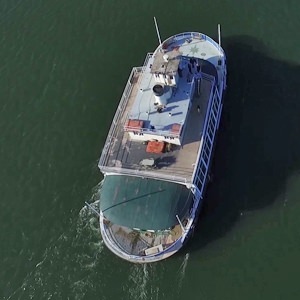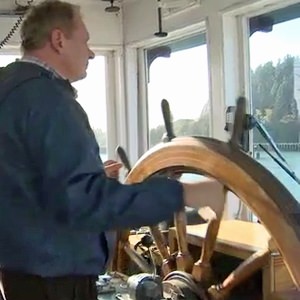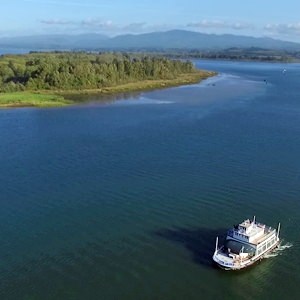In 2016, it might be hard to recall a time not long ago when long wooden, concrete or steel bridges were not common features across Oregon rivers. But back in the late 1800s, only short-span covered wooden bridges were a part of the Oregon landscape. Instead more than 500 ferries carried people, wagons and agriculture across the state’s many river.
“Almost every pioneer community — especially in the Willamette Valley — was connected to their neighbors by roads crossing at least one river on a ferry. Ferries were a fact of Oregon life in the 19th and early 20th centuries,” says Bob Waldron, board member of the Oregon Maritime Museum.
Today, only a handful of active ferries remain in service, such as the Canby Ferry, the Wheatland Ferry near Salem and the Wahkiakum Ferry at Westport. Perhaps that’s why we’ve such a love affair with these remnants of a simple bygone era.
For folks who remember ferry travel across the mighty Columbia River near Astoria, there’s now great reason to celebrate: the Tourist No. 2 has come home.
After 50 years, the Tourist No. 2 has made its way back to Astoria, where it was first built in 1924 by Captain S.F. “Fritz” Elving. The propeller-powered vessel was part of a fleet that included the 1921 Tourist No. 1 and the later Tourist No. 3. Of the vital fleet, today only the Tourist No. 2 remains.
In its heyday, the Tourist No. 2 served passengers on the 9-mile round-trip journey between Astoria and Megler, Washington. During World War II, the ferry served as a minelayer and protected the mouth of the Columbia River.
Local Astorian Dulce Taylor is part of the Astoria Ferry Group, the team who brought the Tourist No. 2 back home. She says holding onto history is “important to locals.”
“We are the oldest settlement west of the Rockies, and we are proud of distinctions like that,” says Taylor. “Some people think we’re crazy to bring the Tourist home, but we’re willing to accept that!”
Soon after the Astoria-Megler Bridge opened in 1966, the ferry service became obsolete.
From old growth fir planks to original brass hardware, Tourist No. 2 remains something wonderful to behold. The ferry’s new skipper is Capt. Bruce Faling, and he says it handles like a dream. He is most impressed with the vessel’s ease of handling and smooth ride.
“She’s very smooth riding but that’s no surprise — she was built right here to handle the mighty Columbia River’s ever changing character,” says Capt. Faling. “Things can change in a heartbeat out here with wind, rain and severe weather — but so far, so good.”
This particular day’s short 5-mile transit from Tongue Point to the Astoria waterfront offers her small crew and a handful of lucky passengers an exciting ride and the chance to drink in Oregon history.
“I think there’s a number of people who have an emotional tie to this ferry,” says Taylor. “It’s like they become the small children who rode this ferry when they were 6 to 10 years old.”
“I remember as a kid, riding across to Megler,” adds Waldron. “Mom and Dad loved to dig clams, and the ferry was part of the trip. It was the way you got around and it continues to be a touchstone for Oregon history buffs — this is about as good as it gets.”
After its public viewing in Astoria, the Tourist No. 2 heads back to Tongue Point for the winter.



